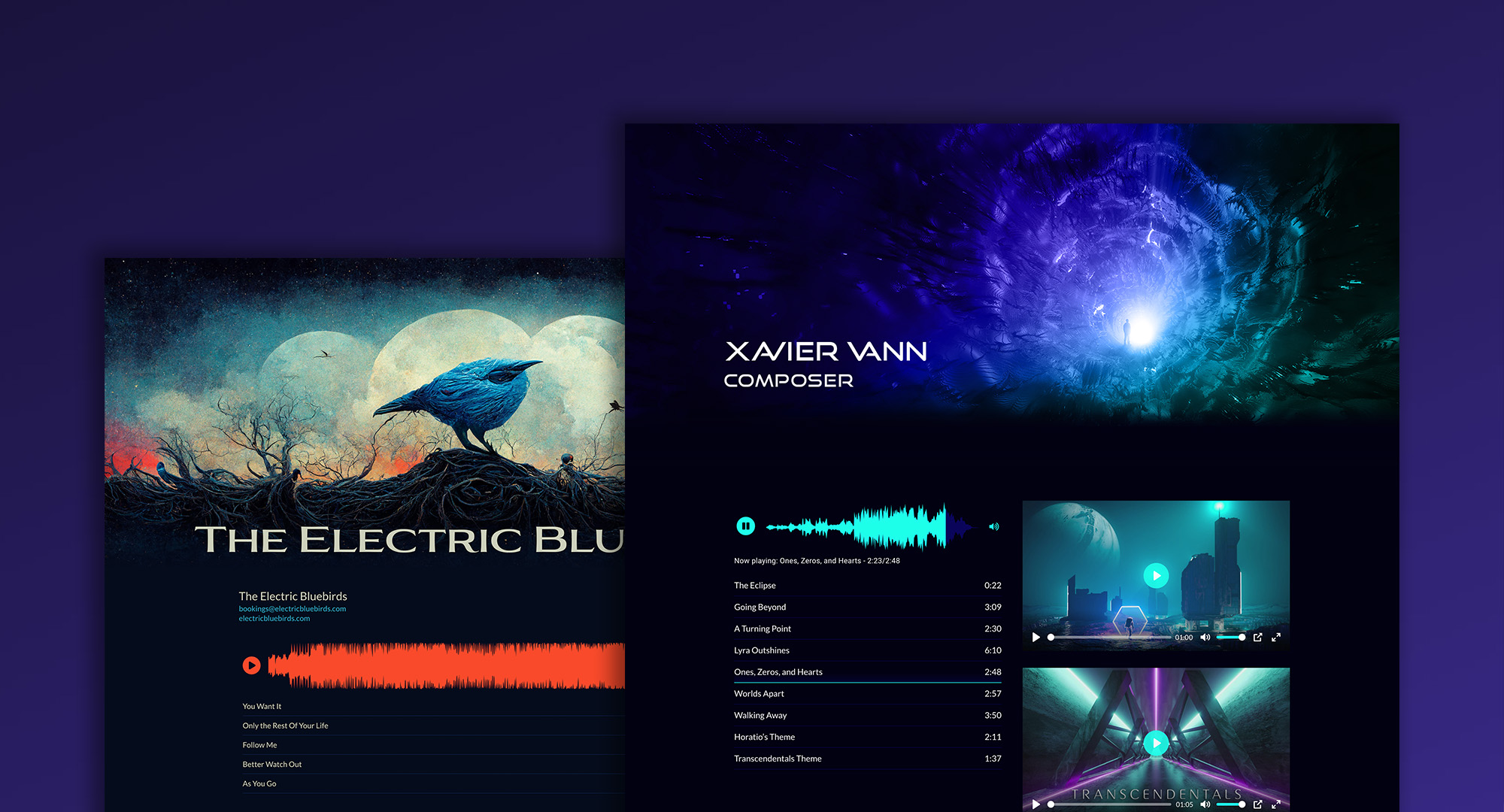As a voice actor, your showreel is your calling card. It’s how you showcase your work and grab the attention of producers, casting directors, and talent agents to land voice-over work in commercials, audiobooks, animated films, and video narration. So you must make a good impression.
What exactly is a voice-over demo reel?
If you’re new to the world of voice acting, you might wonder: what is a demo reel or showreel? A professional voice-over reel, or VO demo, is a web page or video that shows off your vocal talents and can be used to send an “audition” to potential clients. It’s important to remember that your demo is not a full-blown acting performance; it’s simply a way to give someone a taste of your vocal abilities.
To create a truly professional voice demo, you used to have to record it in a professional studio with a producer. However, thanks to advances in home recording software, it’s now much easier to create a professional-sounding voice demo production in a home studio.
Once your voice samples are recorded, there are many different ways to present your final demo, including YouTube, your personal website, and, of course, ReelCrafter. Unlike other platforms, ReelCrafter makes it easy to upload your audio and video examples and add your own artwork to create a genuinely unique reel. Plus, you’ll be able to track listener interactions after sending it out!
But, no matter how you build it, your demo should work hard to capture the attention of future clients.
Why do you need a voice demo reel?
First and foremost, a demo reel allows potential clients to hear your voice. This may seem like a no-brainer, but it’s important to remember that not everyone has the same type of voice or the right voice for a project. A voice demo allows you to demonstrate the unique sound of your voice and what you can do with it.
Second, a reel shows your range as a voice actor. A good demo will highlight the different types of voices and styles you can do. This is important because it shows that you’re not a one-trick pony — you can do more than just one type of voice.
Third, a showreel helps you to stand out from the crowd. With so many voice actors out there, it can be challenging to get noticed. A demo lets you put your best foot forward and showcase your talent.
Finally, your demo allows you to show off your acting chops. While the focus of a demo reel is usually on the voice, it’s important to remember that acting is still a critical part of voice-over work. Therefore, a good reel will show off your acting ability, rather than just your voice.
Now that you know why a demo is essential to landing voice-over work, let’s explore more specifics about what makes an effective demo in the voice-acting industry.
A good demo will highlight the different types of voices and styles you can do
How many voice-over samples do you need?
As a voice-over artist, you may need to record multiple samples to display your various styles and abilities. Depending on the type of gig you’re going for, you’ll need to focus on different aspects of your performance. Here’s a breakdown of four popular types of voice-over demos and what each one requires.
Commercial voice-over demos require personality and professionalism. You need to be able to connect with the listener and deliver your lines with conviction. If you can sing, including a few bars at the end of your commercial reel can be a great way to stand out from the competition. The goal is to show that you’re versatile and can handle various styles.
Animation demos are all about versatility. You need to be able to play a variety of characters with different personalities, energy levels, and vocal ranges. The key to a great animation reel is creating multiple distinct voices and showing that you can vary your performance to fit the project’s tone.
Corporate showreels require a focus on steady delivery and the precise pronunciation of technical terms. This is not the time to show off your personality – you need to sound professional and knowledgeable. This is a more formal voice-over style, and you’ll need to demonstrate that you can maintain a professional tone throughout.
Audiobook demos require you to read a book in your own voice. This is a chance to show off your storytelling skills and range and emotional delivery. Ensure your delivery is engaging and you have a clear, pleasant voice. If you can captivate the listener and transport them to another world, in any genre, you’ll be sure to land audiobook gigs.
Remember to focus on quality over quantity, no matter what type of voice-over demo you’re creating. It’s better to have a shorter demo that demonstrates your talent and range than a longer one that sounds less professional.
Focus on quality over quantity
How long should a voice demo be?
Your demo should be a compilation of your best work or your best takes on a variety of different characters or reads. It should be a display of your range and abilities, and it should be edited so that it is a tight, polished listen.
So, how long should it be?
There is no hard and fast rule, but aim for a demo that’s around 90 seconds total and break it up into segments that are each 15-20 seconds long. This way, you can showcase your vocal range and character versatility in a way that’s sure to capture listeners’ attention. One exception is a narration demo, which can be up to 5 minutes long. The longer length allows the listener to really hear your voice in action and get a feel for your range.
Of course, these are just general guidelines. Ultimately, the length of your demo should be whatever you feel is best for presenting your abilities. So if you have a 10-second-long sample that you’re really proud of, go ahead and include it in your demo. The same goes for a longer piece — if you think it showcases your talent well, don’t be afraid to include it.
Remember, the goal is to give the listener a taste of your range and abilities. So just keep it tight, and keep it focused.
Showcase your vocal range and character versatility
What makes an excellent voice-over demo reel?
How do you ensure that your VO reel will impress potential clients and set you up for success?
Here are four key elements that will help make your demo great:
1. Carefully curated examples
Before you start recording, it’s important to take the time to plan out your demo reel. Choose well-written scripts that will highlight your strengths as a voice actor. Avoid scripts that are too long or complex, as you want potential clients to be able to easily understand your performance and hear your delivery style. Be sure to showcase your versatility as a voice actor.
2. High production value
Your demo should sound professionally produced and polished. This means using high-quality music and sound effects that accent your voice without overshadowing it. A high production value will convey the professionalism needed to succeed in the voice-over business.
3. Guidance and expert direction
During your recording session, it’s essential to have someone who can guide and direct you. An experienced director or voice coach can help you bring the script to life and ensure that your performance is on point. They can also help you with any technical issues that may come up during recording.
4. Your unique voice!
Your voice is, of course, the most crucial element of your reel. You have worked hard to develop your skills and technique, so make sure your demo captures your range and ability. Choose scripts that will show off your vocal skills and range, and make sure that you are confident and comfortable with the material before you start recording.
If you keep these four elements in mind, you will be well on your way to creating a demo that will impress potential clients and help you land the jobs you want.
Take the time to plan out your demo reel
So now that you have a killer voice-over reel, what do you do with it?
Once your demo is complete, you can start shopping it around to prospective clients. But how do you do that? How do you get your demo into the hands of people who can actually hire you?
Here are a few ideas:
Start with your personal network.
Tell your friends, family, and acquaintances that you’re now a voice-over artist and have a demo to show for it. See if anyone knows anyone in the industry who might be interested in hearing your work.
Get involved with online communities.
There are numerous online forums and social media groups dedicated to voice-over artists. Join some of these groups and start interacting with other members. Share your demo and get feedback.
Attend industry events.
Voice-over artists often gather at industry events like trade shows, conventions, and workshops. This is an excellent opportunity to network with other professionals and get your demo heard by people who might be interested in hiring you or even mentoring you.
Submit your demo to casting websites.
Many websites allow voice-over artists to submit their demos to be considered for specific projects. This is a great way to get your name and voice out there.
Work with a voice-over agent.
If you’re serious about voice-over work, you might want to consider working with an agent. An agent can help you get your demo into the right hands for landing gigs.
These are just a few ideas for what you can do with your new voice-over demo. So get creative, and don’t be afraid to put yourself out there. The more people you can get to hear your demo, the better your chances of landing voice-over work.
Create a stunning voice-acting demo reel with ReelCrafter’s easy-to-use online tools. Then get incredibly detailed metrics when potential clients interact with your reel. Sign up for your free 14-day trial here »




